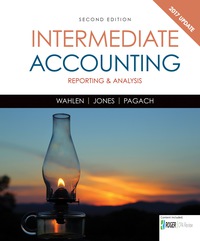Question
For many years, Richard Company manufactured a single product called a mono-relay. Then three years ago, the company automated a portion of its plant and
For many years, Richard Company manufactured a single product called a mono-relay. Then three years ago, the company automated a portion of its plant and at the same time introduced a second product, called a bi-relay, which has become increasingly popular. The bi-relay is a more complex product, requiring one hour of direct labor time per unit to manufacture and extensive machining in the automated portion of the plant. The mono-relay requires only 0.75 hour of direct labor time per unit and only a small amount of machining. Manufacturing overhead costs are currently assigned to products based on direct labor-hours.
Despite the growing popularity of the companys new bi-relay, profits have been declining steadily. Management is beginning to believe that there may be a problem with the companys costing system. Material and labor costs per unit are as follows:
Mono Bi
Relay Relay
Direct materials $35 $48
Direct labor (0.75 hour and 1.0 hour @ $12 per hour) $9 $12
Management estimates that the company will incur $1,000,000 in manufacturing overhead costs during the current year and 40,000 units of the mono-relay and 10,000 units of the bi-relay will be produced and sold.
Management is considering using activity-based costing to apply manufacturing overhead cost to products for external financial reports. The activity-based costing system would have the following four activity cost pools.
Estimated Mono Bi
Activity Cost (and Activity Measure) Cost Total Relay Relay
Maintaining parts inventory (number of part types) $ 180,000 225 75 150
Processing purchase orders (number of orders) 90,000 1,000 800 200
Quality control (number of tests) 230,000 5,750 2,500 3,250
Machine-related (machine-hours) 500,000 10,000 4,000 6,000
Total overhead cost $1,000,000
Required:
- Determine the unit product cost for each product using the traditional costing system.
- Determine the unit product cost for each product using the activity-based costing system.
- Explain the difference in the costs for the two products for the two different methods, the traditional costing system and the activity-based costing system.
Step by Step Solution
There are 3 Steps involved in it
Step: 1

Get Instant Access to Expert-Tailored Solutions
See step-by-step solutions with expert insights and AI powered tools for academic success
Step: 2

Step: 3

Ace Your Homework with AI
Get the answers you need in no time with our AI-driven, step-by-step assistance
Get Started


